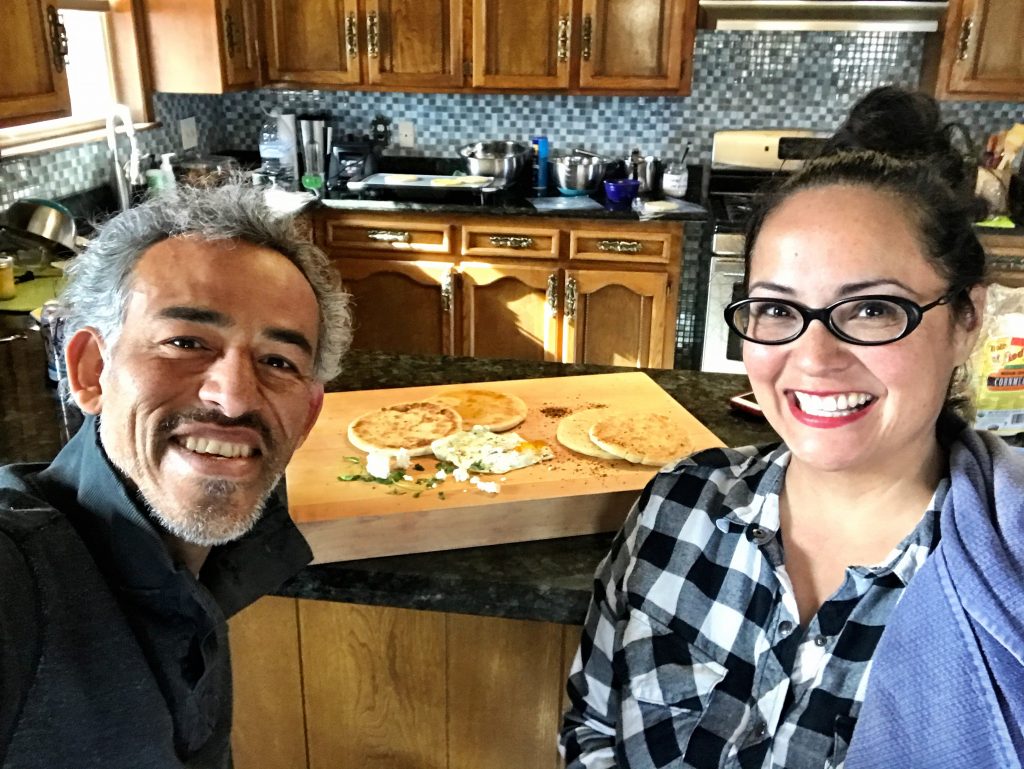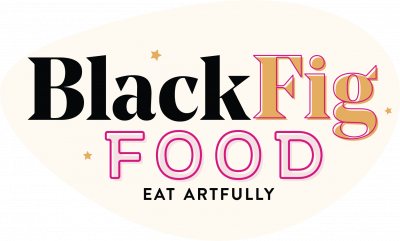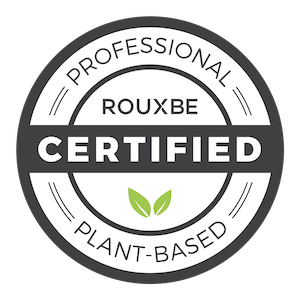When I decided to embark on this new project to showcase a society of artists and their love of creating, I wanted to learn as much as I could about them and, in turn, share it all with you. But, something very magical happened during the first interview with my first artist in this series. By digging deep into this individual, I ended up learning more about myself. So…it went a little like this.
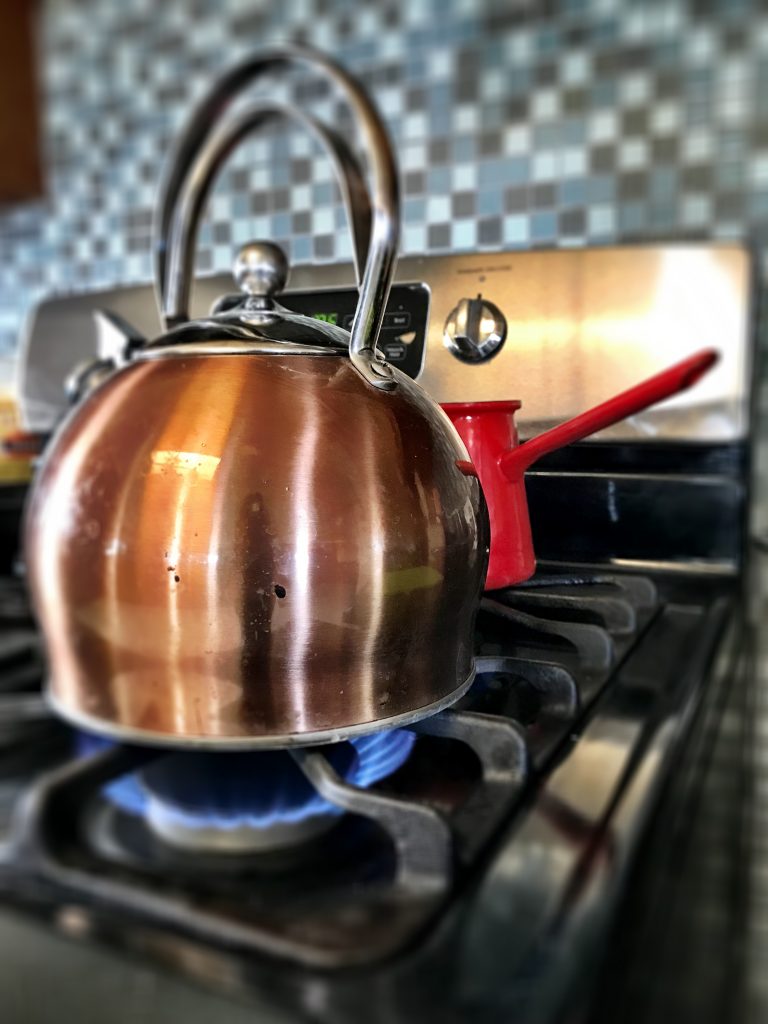
This is Rafa’s tea kettle. I immediately fell in love with his old school way of heating water for french press coffee. I then glanced around to find a microwave. There wasn’t one. I whispered to myself, “I love this guy even more…” We enjoyed coffee with goats milk and honey as we prepared to make his mother’s delicious Colombian Arepas. But, let’s rewind.
About a month before our cooking session, I had Rafa over for a lunch of Salmon with Spinach Quinoa, Tomato Fig Tart, and Olive Tapenade. We engaged in one of the most rewarding conversations I have ever had. Between the clanking of dishes and sounds of our chewing and swallowing, we spoke about art, creativity, people, the Spirit that moves us, and glorious food.
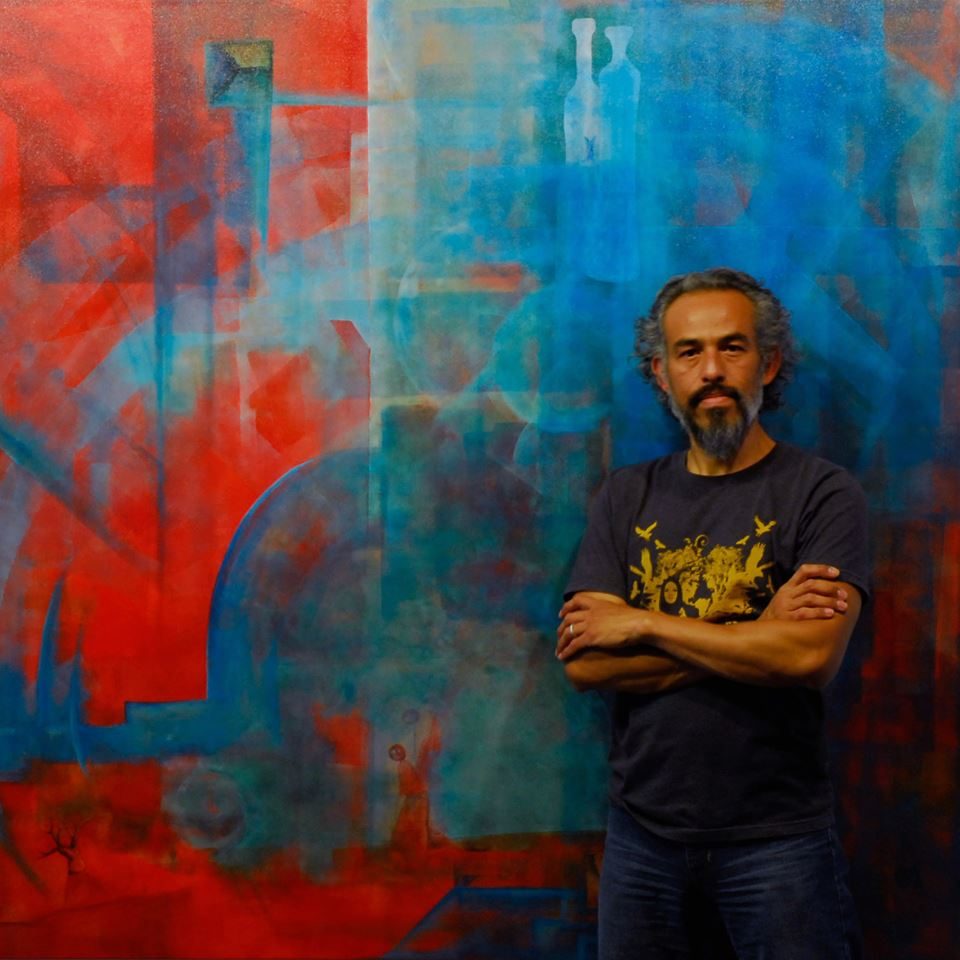
At the sweet young age of seventeen, Rafa and his family moved from Colombia to Pennsylvania. He attended Bloomsburg University for his undergrad in Biology/Chemistry but took one art class each semester to feed his need to create.
He always had a love for art. Having a mother who was a talented seamstress, he had the privilege of witnessing her make beautiful things. Naturally, he wanted to do the same. He began working with wood in high school and sketched up a table/telephone/chair concept and presented it to his teacher for approval. “No way, you can do this…” the teacher said. Rafa replied, “I know that I can do it.” The wooden sculpture, containing a rotating seat, was constructed with layers of wood sculpted by way of a chainsaw, carved, and sanded to a shiny surface. The project won Best in Show at the industrial arts fair. Spending his entire Senior year on the project, Rafa knew that his true love was creating three-dimensional art….especially pottery and ceramics.
Rafa’s graduate work at Cranbrook Academy of Art in Michigan was a beautiful series of vessels. They were exploration for him on the human body as a “vessel” or “spirit.” I was immediately intrigued by what fed his creative energy. We spoke at great length about what drove him to create.
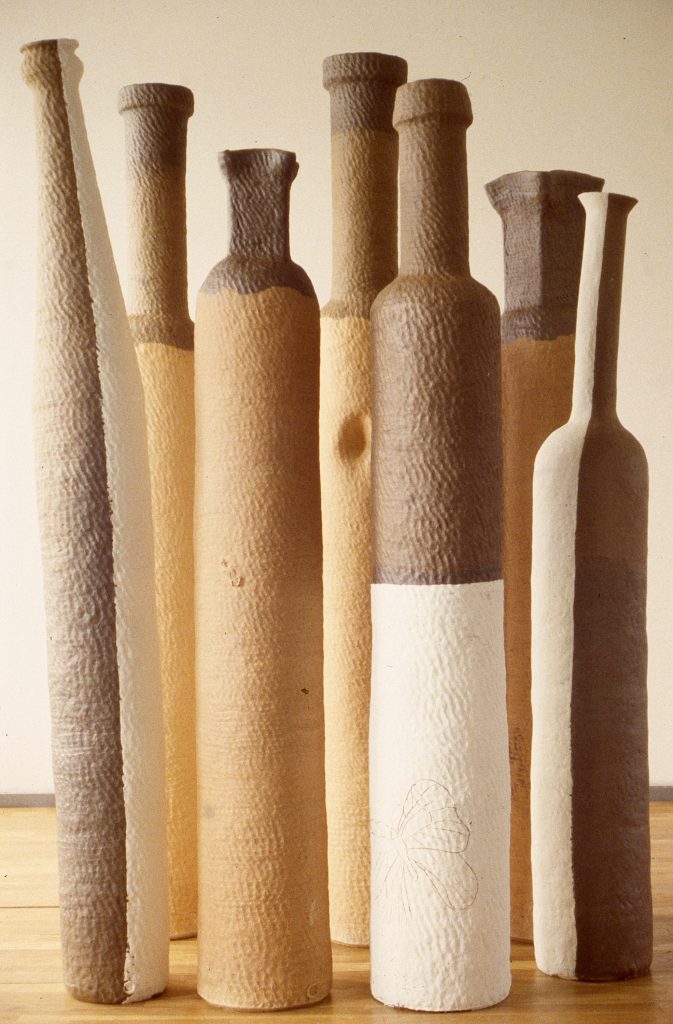
“What moves my work is an interest in the material, technique, and perfecting that technique. I tend to find new ways or a certain synergy of approaching work in one way or another. A driving force has always been the conceptual aspects of my work. I do not do work without concept. There is always something to be said and investigated. I allow myself permission to explore my creativity in many ways. A friend once told me,” There is no difference between cooking, gardening, or making art.” I use the same skills in all realms. And I am continually working/creating. I save studio notes on my phone and already have several concepts for my next series. Once I have the conceptual aspects and materials for the work, it all then becomes a conversation between the three of us. The theme develops, and each piece within a series becomes a sentence or paragraph.”
“One concept that interests me, in particular, is the idea of the sacred and profane….our relationship with the Spirit… our relationship with this thing we call God. Buddhism, Christianity, all of these things make me realize that when we hit that frontier between one state, moving into a different state, we experience great resistance. Boiling water, for instance, the greatest tension is at the surface. That resistance becomes a deterrent within ourselves to move forward with the idea that we fear to share. We become our worst critic, so, for the sake of protecting us from failure, we don’t move. We can train ourselves to stop that resistance and move forward. When experiencing change, we get this feeling of becoming something greater when we start to shed our skin. It is “change.” In art, I suspend that belief. Just let it be and engage in the conversation.” For Rafa, art is all about the process of discovery. He goes on to say, “When we hit the point where there is no longer discovery when we then think we are at the end of it, there is ALWAYS more to discover. Discoveries may have already occurred, but a discovery within ourselves will always be a discovery.”
In his show, The Paradox of Being, a few years back, he interpreted between the physical and metaphysical through a series of paintings. He explains, “The world is such a huge place. Each human being is so insignificant…yet each of us is extremely sacred, important, and unique. The series was an investigation of contradiction and harmony through the process of art-making. How does one deal with human beings being so beautiful, but at the same time, so capable of doing great harm? We all have that potential to be that person. No one is exempt from being great or being horrible.”
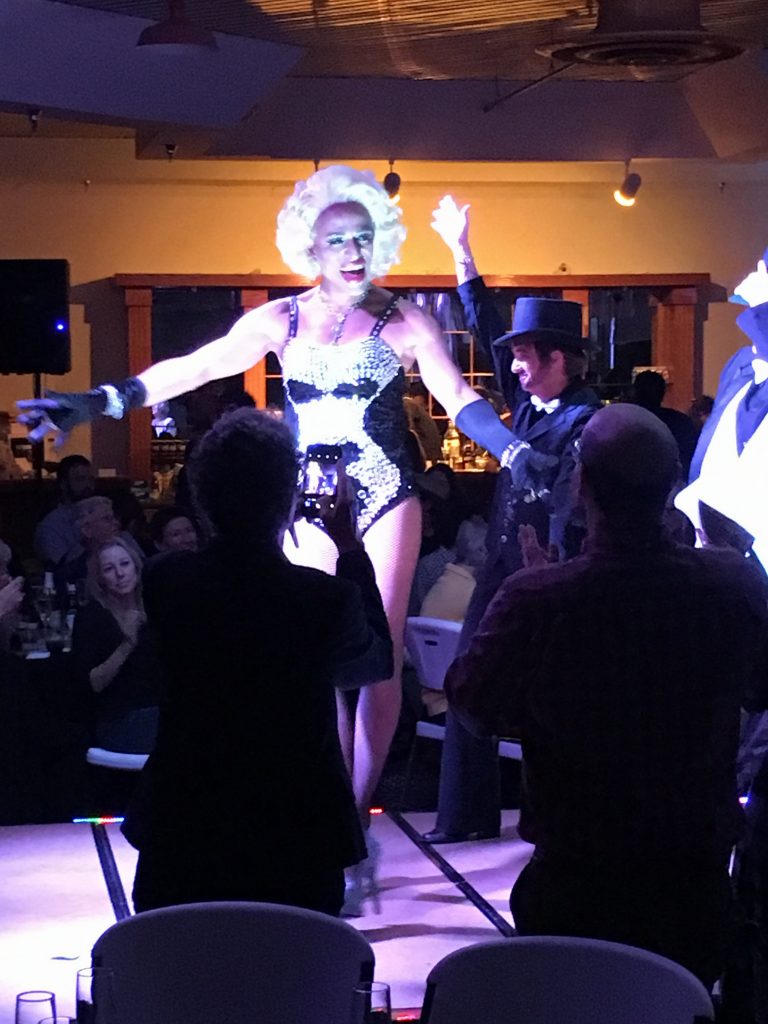
After learning about his artistic approach to ideas, I was curious to know of his ritual in preparation to bring those ideas to fruition. Whether he is spending hours into months in the studio sculpting and painting or performing on stage in drag, Rafa always succeeds in delivering his talent to us on a gold platter.
Back in Bethlehem, Pennsylvania, Rafa’s background in ballroom dancing struck an interest within him for performance art. He, then, became a part of the Touchstone Theatre Ensemble. His latest drag show project was in this year’s Panhandle Aids Support Organization’s Turnabout fundraiser. I asked if he had a ritual before he begins to create/work. “I thank the Spirit for the opportunity to do this…to be with me and guide me. I breathed in and acknowledged God’s presence. This important step has always brought the best dynamics ever in the studio. I make a conscious decision to get out of my way and let the work do itself.”
“Throughout history, people all over the world have had the same idea without communication….pulling it out of the ether and manifesting it simultaneously. I feel that this occurs from being in sync with one another on a spiritual level. I focus on prayer and meditation to be available for the conversation between concept, materials, and myself to take place. In the studio, I worked for three months, 12-13 hours a day. Things happened that I could not have foreseen. I had no time to critique. I just trusted the work.”
The thing he helped me with the most was that he taught me to be okay with accepting others’ compliments on my work, accepting myself as an artist, and saying it out loud. He explains, “By not trusting others to be honest with us, we are not letting them support us in our journey. We are robbing them of that. What they are saying when they compliment you on your artwork is that “I see something special,” and you should negate that.” He then shared a story with me to prove his point.
“As an undergrad, I was assisting in the Catholic Ministries. Our Catholic campus priest went shopping and returned with lots of groceries for the center. A few of us rushed outside to help carry in bags. One student offered to help with the door as I approached carrying tons of bags. I said no, I got it! The Father then said to me, “Rafa, you love helping and supporting people. You just denied that student the pleasure of supporting you.” So Ruthie, when we deny people the pleasure of supporting us, by what we hear them say if you think it is false, then that is on you. If what someone says to you isn’t true, but they tell you it’s true, then that is on them. You take in what they say as truth and accept it as truth. Accept what they are saying. Thank them for it. Thank them for their praise.”
And at that moment, it was evident to me that Rafa had fucking blown my mind with everything he shared. But it wasn’t over. He continued with the mind-blowing recipe and memory of his beautiful mother.
“Food makes me moan. I had a very supportive and loving family. They nurtured me into becoming who I am today, and they continue to support me. The food she would make was complete comfort for me. It expressed love in that my parents gave us the best of what they had, including the best food. My mother was always focused on making special dishes for each child. She catered to everyone. To her, it was not spoiling them. I did not mind because I benefited from being able to eat a little bit of everything she had made for the others.”
“When I visit my mother, she prepares arepas for me because she knows that I love them. They are like a thick tortilla made from cornmeal. She usually serves them with a soft boiled egg and torn pieces of arepas in a bowl.” As he describes the dish to me, his mouth begins to water, and then we laugh. There were other ways she would make them for him: Arepas Choclo (made with tender corn, harvested at just the right time to ensure the right amount of sweetness). “When I eat it, it takes me to places….love, home, comfort. When I am creating art, it is a conversation, not a monologue. Same with cooking, I am aware that others will enjoy it. I have the viewer/audience in mind. Stumbling on that love, home, and comfort during the process of creating art.. you step aside and look at your work as ‘not your work’ but say, “Wow, this is cool!” Not like, oh wow, look at what I made. I’m fantastic,” but “Thank you, Spirit, for letting us (me and my concept) see this. You are a conduit, an instrument to create something you’re proud of. When you create something great, it brings gratitude, enjoyment, pleasure, and a sense of being taken care of.”
Our lunch neared the end but, not before he tried the tapenade. As he spooned a bit onto his plate, he closed with, “How do we balance with being realistic about where we are with the idea of our unlimited potential? What are our dreams? What is the Spirit showing us? What am I capable of creating? Do we see ourselves doing certain things? If so, we must picture it. Picture what it will give us. What will WE give back in return? Have the courage to accept what you see and do it. If you see it, it is for you to do. The most important thing for us to do as artists is to LEARN TO DREAM, GIVE IN TO THOSE DREAMS AND HAVE THE COURAGE TO PURSUE THEM. Trust that God or the Universe will find a way for them to become a reality.”
AREPAS CON QUESO FRESCO
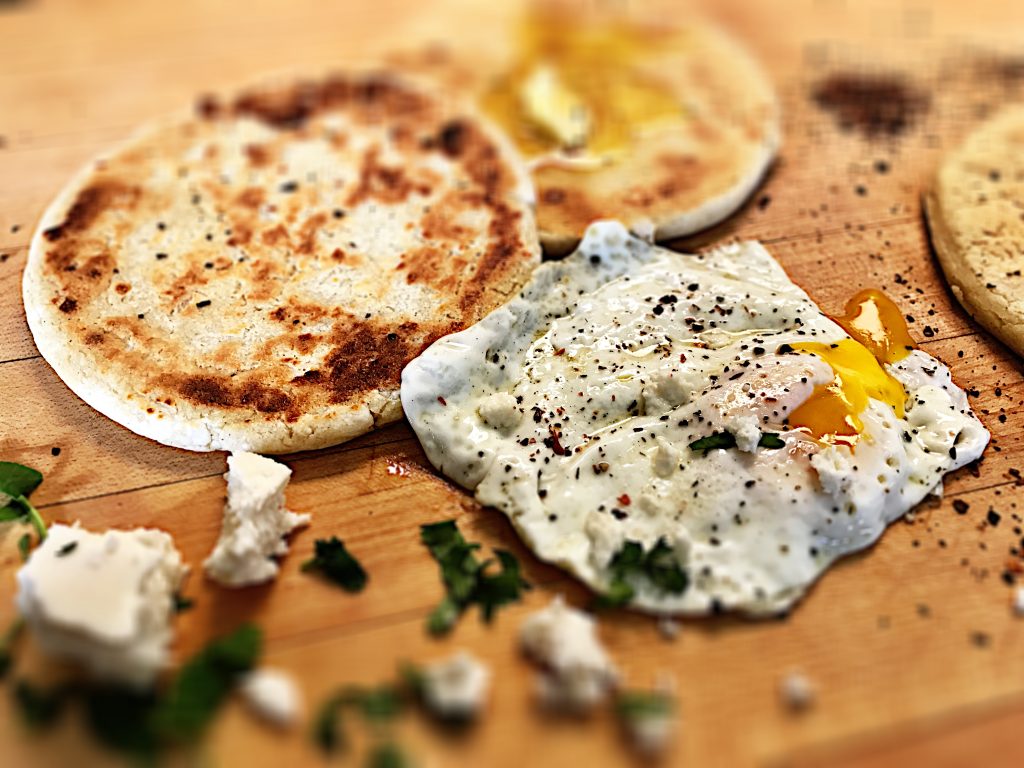
1 cup Masarepa or Maseca cornmeal
2 ounces (about 1/2 cup) finely crumbled queso fresco (you can add more, it just might dry out your dough. Add more water to keep the dough from cracking)
1 1/2 cups hot water, plus more as necessary
Two hefty teaspoons unsalted butter
Kosher salt to taste, about a tsp
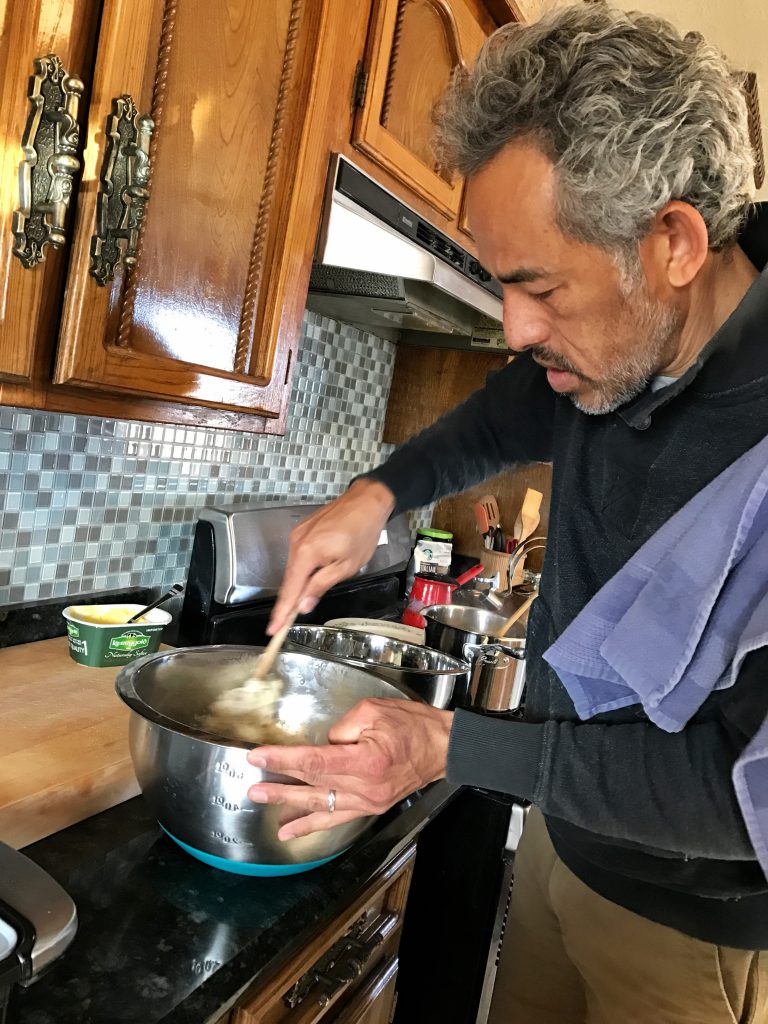
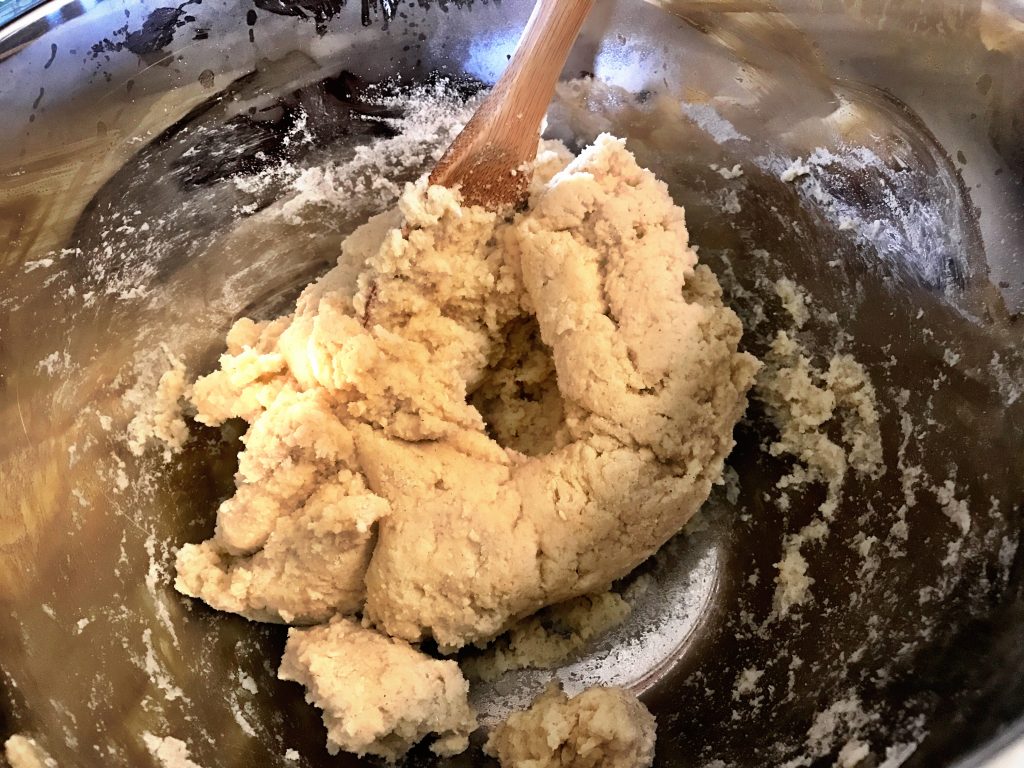
Combine masarepa, queso fresco, 1 cup water, and butter in a medium bowl and knead with hands until a dough forms.
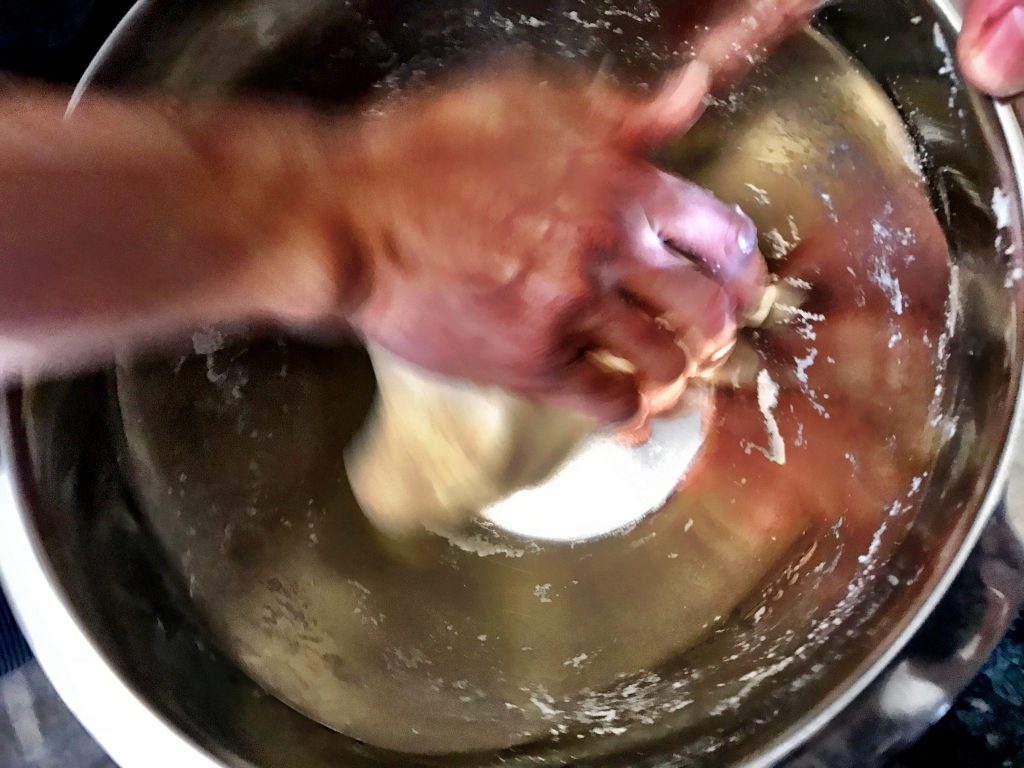
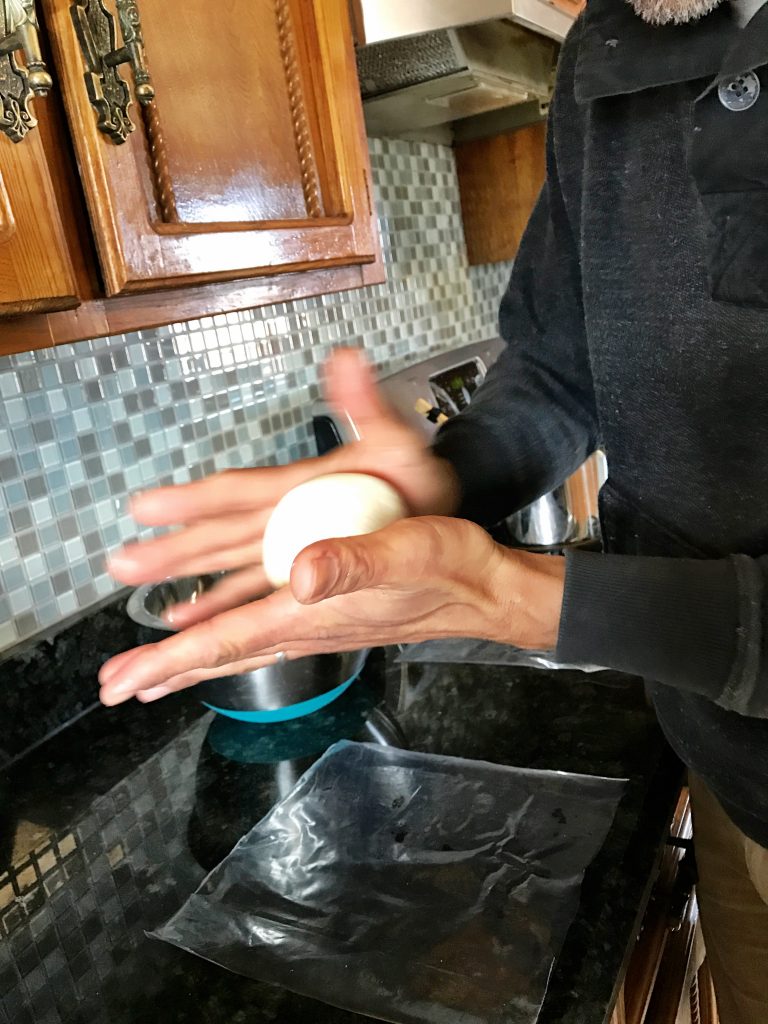
Divide dough into even pieces and roll into balls.
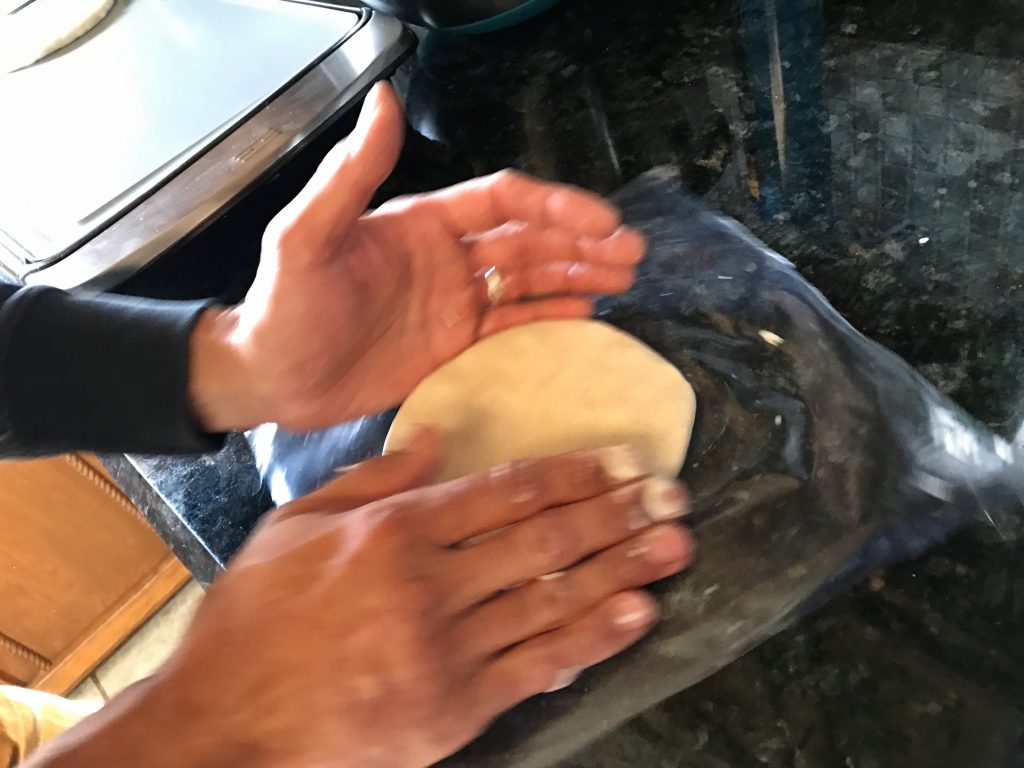
Working on a wooden cutting board or a regular cutting board with a sheet of plastic wrap or parchment paper on top of it, flatten each ball down to a disk about 5-inches in diameter and 1/4-inch thick. If the edges crack, using fingers, apply more water a tablespoon at a time to the top of the cake and smooth the cracks out. Season dough to taste with salt, then cover and set aside for five minutes.
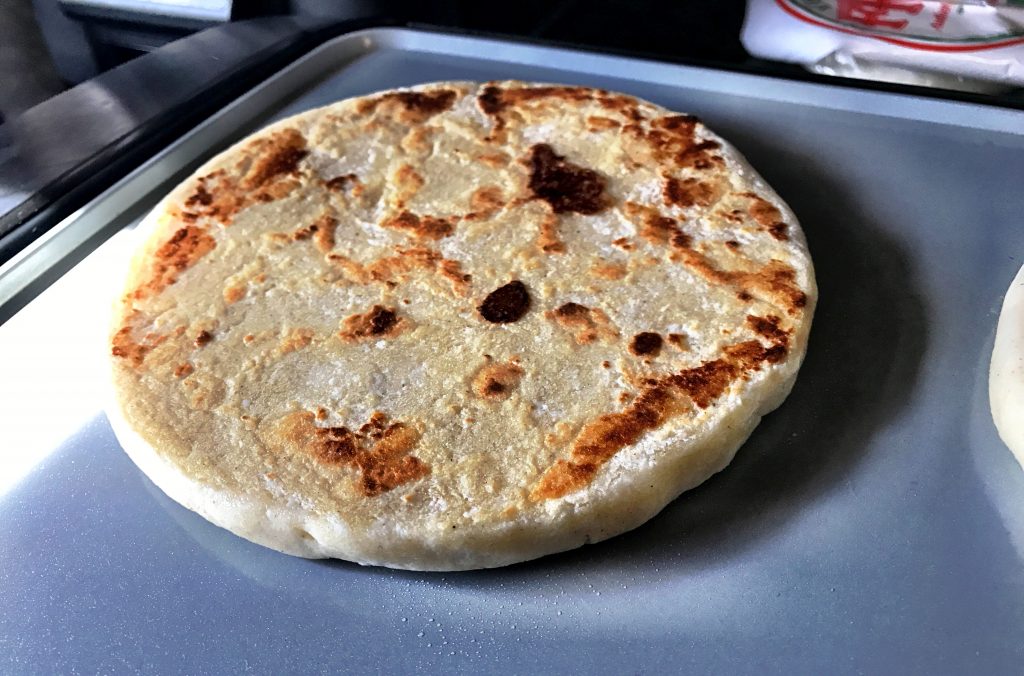
Cook arepas on a flat non-stick electric griddle at 350 degrees. Move them around the pan and rotate them occasionally, until charred in spots and a dry crust has formed about 10 minutes. Flip arepas and cook on the second side until a dry crust has formed, about another 10 minutes longer. Continue cooking, flipping every minute or so, until arepas are mostly dry and relatively stiff, about five minutes longer. You can also cook them in a heated black cast iron skillet with a little oil. Serve hot with cheese, melted butter, or toppings of your choice. We ate them UP with fried eggs, extra queso fresco, and a dash of ground Chimayo spice! You should do the same. ENJOY!
